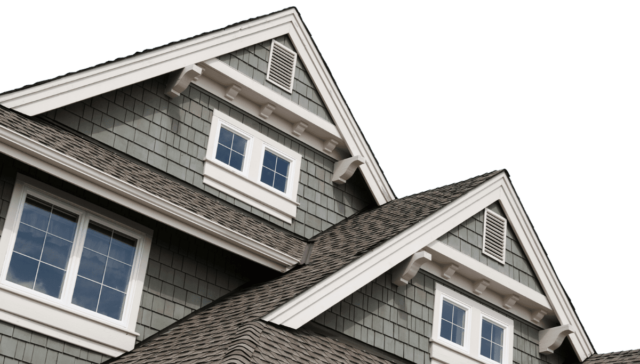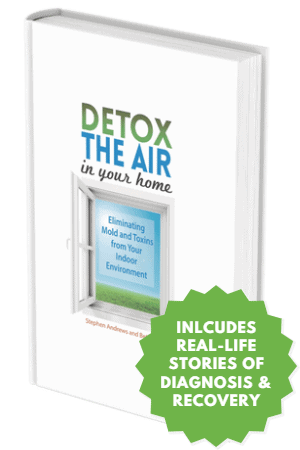-
Do you suffer from symptoms that seem to occur when you occupy a specific building?
-
-
Do these symptoms lessen in severity or disappear when you leave the building?
-
-
Are there no known causes of your illness?
Your home may be making you sick.

- ARE YOU AWARE OF -
SICK BUILDING SYNDROME
Sick building syndrome occurs often, but many are not aware of the official definition of the condition. The official definition of sick building syndrome according to the Environmental Protection Agency is:
"A situation in which the building occupants experience acute health and comfort effects that appear to be linked to time spent in a building, but no specific illness or cause can be identified."
Many homes built today are constructed to be as energy efficient as possible. Additionally, homes are becoming increasingly airtight. Although that may help with energy efficiency, it can often lead to indoor air quality issues that contribute to sick building syndrome. Homes that are airtight often lack adequate ventilation, meaning the building envelope cannot breathe and the indoor air becomes polluted because of less air exchanges between the indoor and outdoor air. Conversely, older homes were often constructed utilizing practices that neglect indoor air quality and create conditions that sustain mold growth. It’s important to understand the many different contributing factors to avoid sick building syndrome.
- DO YOU KNOW THE -
CAUSES OF SICK BUILDING SYNDROME
Understanding the contributing factors to SBS is crucial for mitigating its effects. The five primary contributors to Sick Building Syndrome include water damage, HVAC systems, lack of humidity control, spray foam insulated attics and foundation issues. Each of these factors can play a significant role in compromising the health and well-being of individuals in affected buildings.
-
Inadequate Ventilation
-
Mold Contamination
-
Water Damage
-
Poor Indoor Air Quality
-
Chemical Contaminants
-
Poor Foundation Water Drainage
-
Leaky Air Ducts
-
Elevated Humidity
-
Poorly Sealed Attics
-
Leaky Crawl Space Encapsulation
-
Condensation in Walls
-
Presence of Volatile Organic Compounds
-
Gas Leaks
Water Damage
Water damage can occur throughout any area of the home for various reasons. Water leaks can allow for mold growth if not quickly addressed, allowing mold to remain hidden and difficult to find. Two common misconceptions are 1) Hidden mold behind walls and underneath floors cannot become airborne. 2) If the water source has been addressed, there’s no longer a concern for mold growth.
Despite the misconceptions, hidden mold can become airborne and infiltrate the living environment through various cracks, gaps and crevices such as receptacles, light fixtures, gaps in the flooring, etc. Furthermore, mold that no longer has a water source and becomes dried out can become airborne more easily as its spores become lighter and break off into numerous fragments.
Lack of Humidity Control
Improper construction practices and building science can lead to elevated levels of humidity. Many different factors should be considered at the time of construction to adequately control humidity within a home. Such factors include engineering and design of the HVAC system, type of foundation, exterior drainage, exterior water migration, seal of the building envelope, R-Value of the insulation being used, and the region the home is being constructed in to name a few. If humidity control is neglected and humidity remains elevated for sustained periods of time, the building materials can absorb enough moisture from the air to then sustain mold growth within several different areas of the home.
HVAC Systems
An HVAC system is comprised of many different components, several of which can be susceptible to mold growth. Common components susceptible are evaporator coils, duct board plenums, ductwork and registers/vents. It’s important that each component be designed and installed in a way that reduces the chances of mold growth. Over-sized HVAC systems can also be a contributing factor because of the increased cooling capacity that creates a term called “short cycling”. Short cycling refers to an HVAC system frequently cutting on/off because its cooling capacity is larger than the home requires. Humidity can become elevated as a result because the shorter run times don’t allow for enough air to pass through the evaporator coil to remove adequate amounts of moisture from the air.
Spray Foam Insulated Attics
Spray Foam insulation is becoming increasingly popular because of its many energy benefits. Spray foam attics create a hermetically sealed space, filling any gaps, seams or voids where air can escape. Without any ventilation within the space, the air from inside the home cannot escape and the humid air can become trapped within the attic. Elevated levels of humidity within a spray foam insulated attic can cause HVAC systems located within attics to condense and create conditions to sustain mold growth. It is crucial that humidity be controlled by properly sizing the HVAC system and/or supplementing additional dehumidification in homes built with spray foam insulated attics.
Foundation Issues
Homes are built on various types of foundations such as concrete slabs, poured concrete walls, block walls, crawl spaces, etc. A builder should consider how moisture can migrate through a foundation and how to effectively mitigate against it. If neglected, the foundation can allow moisture to migrate through and increase the humidity within the home. To make matters worse, moisture can compromise the structural integrity of a foundation and can cost tens of thousands of dollars to repair.
- STAY VIGILANT FOR THESE -
SIGNS OF MOLD IN THE HOME
One of the most common causes of sick building syndrome is biological contaminants, such as mold, in the home.
Mold can have a significant impact on your health, but it is often overlooked as the cause of illnesses. Mold can be an invisible intruder, growing behind and around what you can see such as attics, crawl spaces, wall cavities, basements, furnaces, ducts, and around foundations. However, there are common signs you can look for for mold in your home.

-
Musty Odor
-
Stains on Walls or Ceiling
-
Peeling Wallpaper or Paint
-
Moisture or Condensation on Walls or Windows
-
Visible Green, Black, White, Blue, Pink, Red, or Brown Mold
- KNOWLEDGE IS POWER -
WHAT TO DO IF YOU THINK YOUR HOME IS MAKING YOU SICK
Treat your home, so you can treat your symptoms.
Treating sick building syndrome must address all aspects of the building to get to the root cause of the issue. Healthy Air USA’s knowledge and expertise in the HVAC industry, as well as building science allows us to get to the root cause of sick building syndrome that many other companies cannot.
Several of our team members have their own experiences with sick building syndrome, making the Healthy Air USA's team uniquely qualified to understand and empathize with those suffering from sick building syndrome.
- WE'RE HERE TO HELP -
CONTACT HEALTHY AIR USA
Call Healthy Air USA today or complete the form. A Healthy Air USA representative will contact you to discuss the signs that you may be suffering from sick building syndrome, the symptoms you are experiencing, and how Healthy Air USA's services may help.
CONTACT HEALTHY AIR USA
Proudly serving the greater metro Atlanta area
Call Us at 770-205-1710
Monday - Friday: 8AM to 5PM

